The History of Wigan Volunteer Drill Hall and its Resident Units 1884-1986
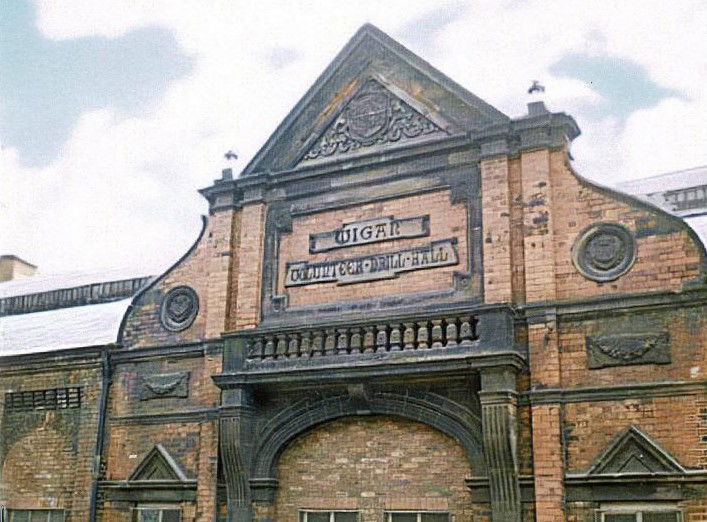
Origins
In 1881 a proposal was made to build a Volunteer Drill Hall in Wigan, in July of that year a prospectus was issued by a newly formed Company consisting of prominent businessmen and officers of the Wigan Detachment of the 4th Lancashire Rifle Volunteers (4 LRV). The capital of £6,000 to be raised consisted of fixed shares of £1 each, in order to enable the volunteers themselves to become shareholders in the undertaking.
The proposed site was in Powell Street, off Standishgate and the foundation stone was eventually laid on 21 June 1884 by the Commanding Officer of 4 LRV, Lt. Col, Rt. Hon. the Earl of Crawford and Balcarres.

Volunteer Drill Hall, Powell Street, Wigan
Six months later on Friday 20 December 1884 the drill hall building, which also included a caretakers residence on the corner of Church Street and Water Street was officially opened by the Earl. That evening a presentation called the ‘Grand Assault of Arms’ was held by the volunteers of 4 LRV. Entertained by the regimental band the audience witnessed demonstrations of fencing, boxing and gymnastics, and bayonet versus sword exercises.
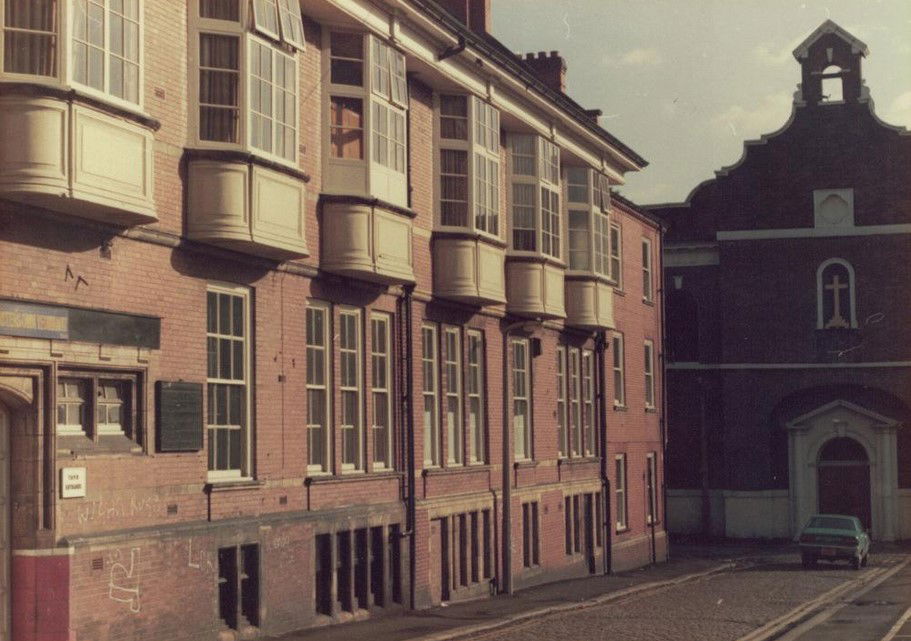
The entrance to Wigan Volunteer Drill Hall in Church Street, with St. George's church in the background.
The drill hall was not intended exclusively for military use, it was also for the people of the town. With over 9000 square feet of floor space it was also utilised for public meetings of all descriptions, trade exhibitions, concerts, bazaars, children’s parties, and indoor sporting events etc.
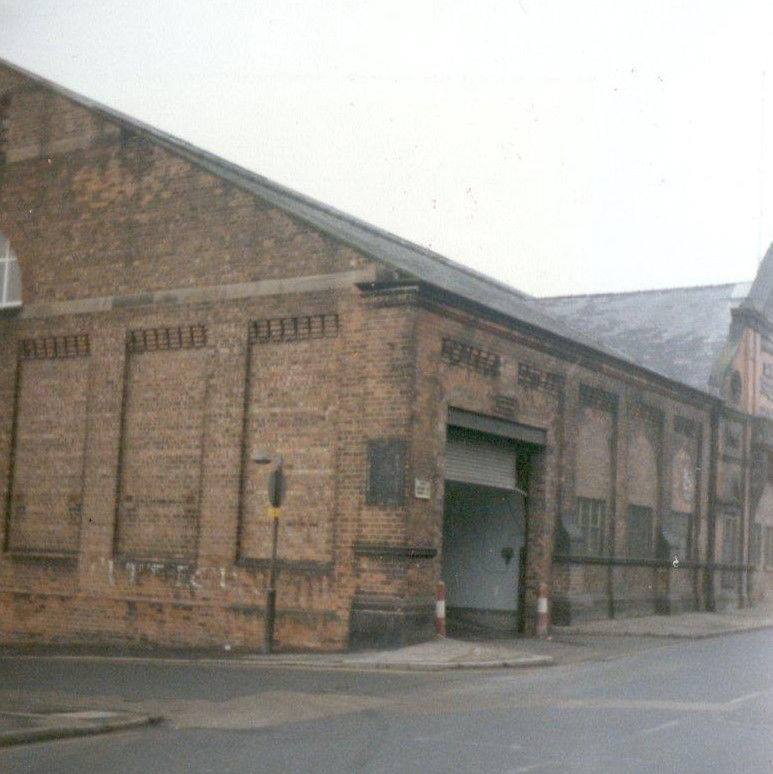
Corner of Powell Street and Water Street with the roller doors open for vehicular access.
In 1888, 4 LRV was re-designated as 1st Volunteer Battalion, Manchester Regiment and in 1908 following reforms by the Secretary of State for War Richard Haldane, the Territorial Force (TF) was born. The 1st Volunteer Battalion was re-designated as 5th Battalion Manchester Regiment (TF).
The Great War Years
At 17.30 hours on Tuesday 4 August 1914, the day that Britain declared war on Germany and it's allies, the volunteer soldiers of the 5th Manchesters were mobilised for war and reported for duty at their respective drill halls. Three days later 'F', 'G' and 'H' Companies from Eccles, Leigh, and Atherton respectively, marched to Wigan to join the remainder of the battalion. At well over a thousand strong, apart from the drill hall the troops were billeted in the Wesleyan, St. John and St Mary's schools.
During the First World War the regiment formed three battalions. The first two, designated 1/5th Battalion and 2/5th Battalion were front line troops, the 3/5th Battalion remained in England and became the training and reinforcement battalion.

Soldiers of the 1st/5th Battalion Manchester Regiment resting in the drill hall after reporting for war duty in August 1914.
Led by Lt. Col. Henry Clayton Darlington, 1/5th Battalion sailed for the Middle East on 10 September 1914 as part of the East Lancashire Division. They were the first territorial soldiers to ever leave Britain’s shores. The battalion fought with distinction in the Gallipoli campaign in 1915, suffering 668 casualties, and later in the Egyptian desert as part of the Suez Canal Defence Force.
In 1917 the battalion was transferred to the Western Front and on 2 March sailed for Marseilles, in September of that year it fought in the Battle of Passchendaele in the Ypres Salient. By the time of the Armistice in November 1918 the battalion had suffered a total of 1,845 casualties, including 400 killed, 1,308 wounded and 137 missing in action.
On 7 April 1919, after serving overseas for four years and eight months, a cadre of six officers and 50 other ranks of 1/5th Battalion, led by Lt Col Darlington and including the battalion’s only Victoria Cross winner, Lance Corporal Alfred Wilkinson from Leigh, arrived back in Wigan carrying the Regimental Colours. These were later laid up in a dedication ceremony in Wigan Parish Church, where they remain to this day.
As part of 199th Brigade, 66th Infantry Division, the 2/5th Battalion Manchester Regiment entered the war on the Western Front on 6 March 1917. During the next twelve months of active service they saw plenty of action, including the Battle of Passchendaele in October 1917. During this period they suffered 98 killed in action, 314 wounded and 23 missing in action.
The battalion also suffered very heavy casualties in the German Spring Offensive which commenced in March 1918. As a result they were reduced to a training cadre, tasked with teaching newly arrived American troops the art of trench warfare. The remnants of the battalion were eventually absorbed into their sister battalion from Wigan, the 1/5th.
Today the names of 163 soldiers of the 5th Battalion Manchester Regiment who fell in the Great War are commemorated on Wigan Cenotaph, and many more are commemorated on memorials in the smaller townships dotted around Wigan.
The cap badge of the Manchester Regiment was the distinctive Manchester coat of arms. Unfortunately the uniformed employees of the Corporation's transport department wore the same cap badge. The soldiers became the butt of jokes and were disparagingly called the Tram Conductors. In 1923 the cap badge was changed to that of their 7th Battalion. The Fleur de Lys.
World War Two
On 1 September 1939, two days before the declaration of war with Germany, the part time soldiers of the 5th Battalion Manchester Regiment, Territorial Army were mobilized and reported for war duty at the Drill Hall. Training was initially conducted on nearby Central Park, the home of Wigan Rugby League Club, and in the local vicinity, before moving further afield to military training areas.
As part of 127th (Manchester) Brigade of 42nd (East Lancashire Division) they moved to the French / Belgian border on 24 April 1940. During the later withdrawal by the British Expeditionary Force to the French coast, the battalion was engaged in close combat to the west of Bergues. During 1st/ 2nd June 1940 the battalion was evacuated back to England from the beaches at Dunkirk.
On return to the UK, 42nd Division was sent to Northern Command to reorganise, the 5th Manchester’s moved to Stokesley near Middlesborough, later moving to West Auckland.
In October 1941, 42nd East Lancashire Infantry Division was reassigned as 42nd Armoured Division when its infantry battalions converted into tank regiments. On 1 November 5th Battalion Manchester Regiment became 111th Regiment, Royal Armoured Corps. On 15 November 1943, 42nd Armoured Division was disbanded, 5th Battalion Manchester Regiment reverted to their original designation and role as infantry. On 1 December 1943 the battalion was at Greatham, County Durham.
The reformed 5th Battalion was organised as the machine gun battalion for 55th West Lancashire Division. The division was on a lower establishment scale, serving in a home defence role, and providing reinforcements for formations overseas. Although it was restored to a higher establishment in May 1944, just before D-Day, it was never deployed overseas.
In August and September 1944 the 5th Manchester’s stood guard over the royal family at Balmoral Castle. In December the battalion moved to Nutley, East Sussex, but ‘D’ Company remained on royal protection duties at Sandringham House in Norfolk.
Post Second World War
On 15 November 1945, the 5th Manchester’s were sent to Malta, remaining there for a year until the battalion was demobilised in November 1946. The remaining 157 men of the battalion transferred to the 1st Battalion in Germany, who were part of the occupying British Army of the Rhine.
The following year however 5th Battalion was reformed in Wigan as 652 Heavy Anti-Aircraft Regiment (5th Bn Manchester’s) Royal Artillery. In 1955 another Royal Artillery unit assumed residence in the drill hall, 59 Anti-Aircraft Fire Control Troop.
In 1958 the Manchester Regiment merged with the Kings (Liverpool) Regiment. In the process, as a junior regiment it lost its identity, bringing an end to its seventy year association with Wigan.
For a number of years in the 1960’s the drill hall was unoccupied and the Army Recruiting Office moved in. In 1967 the Labour government undertook a major reorganization of the Reserve Forces, and many Territorial units were axed, merged, or put into suspended animation as cadres.
In 1971 following a change of government, a new unit moved into the drill hall in the form of ‘A’ Squadron, Duke of Lancaster’s Own Yeomanry (DLOY). It had been brought out of suspended animation and from its cadre of eight men was soon recruited up to full establishment strength.
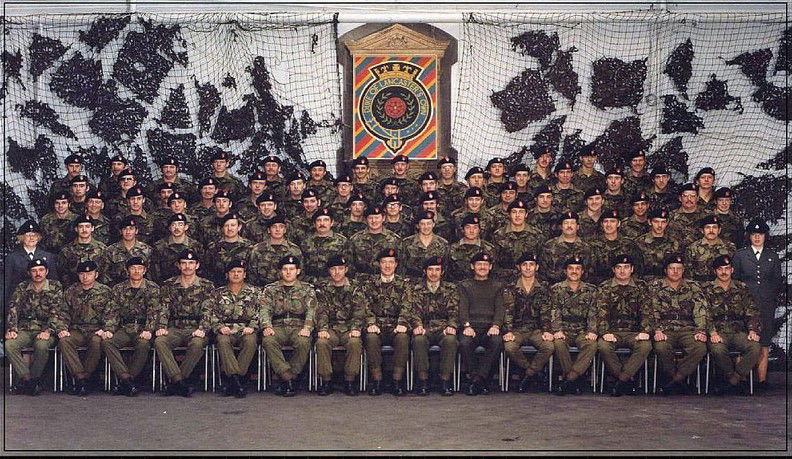
Members of 'A' Squadron, Duke of Lancaster's Own Yeomanry inside the Drill Hall prior to demolition
The DLOY was a cavalry regiment but owing to a lack of resources and wishing to retain its identity as an independent unit it opted to operate in the dismounted role as a home defence infantry regiment.
In 1983 the DLOY was once again re rolled, to that of a home defence reconnaissance regiment, tasked with covering the whole of north west England and Scotland. ‘A’ Sqn DLOY at Wigan was tasked with becoming the reconnaissance unit for the whole of the Highland and Islands of Scotland.
In December 1984, the DLOY held a ball to celebrate the drill hall’s one hundred years existence knowing that shortly their association with the drill hall would come to an end. The following year they moved to temporary accommodation in Woodhouse Lane. In 1986 the drill hall was demolished to make way for a road widening scheme.
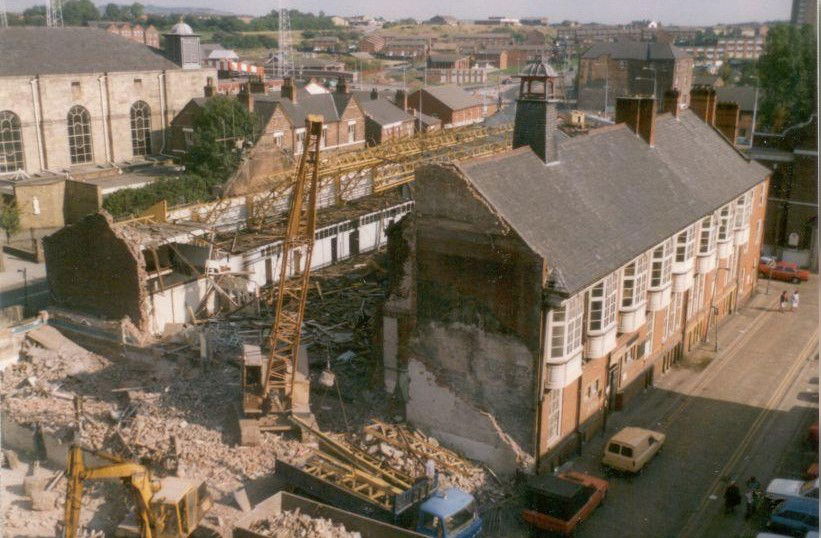
Demolition of Wigan Volunteer Drill Hall, 1986
In 1991 the Yeomen eventually moved into a new purpose built building, also in Woodhouse Lane. They remain there to this day in the guise of ‘B’ Squadron, Queens Own Yeomanry, thus ensuring after 200 years the continuity of volunteer part time soldiering in the town.

Ornate stonework from the original Volunteer Drill Hall preserved at the Army Reserve Centre in Woodhouse Lane, Wigan.
On 22 August 2024 a memorial to the Volunteer Drill Hall and it's resident units was unveiled in Church Street, Wigan.

The standard bearers stand proudly behind the memorial
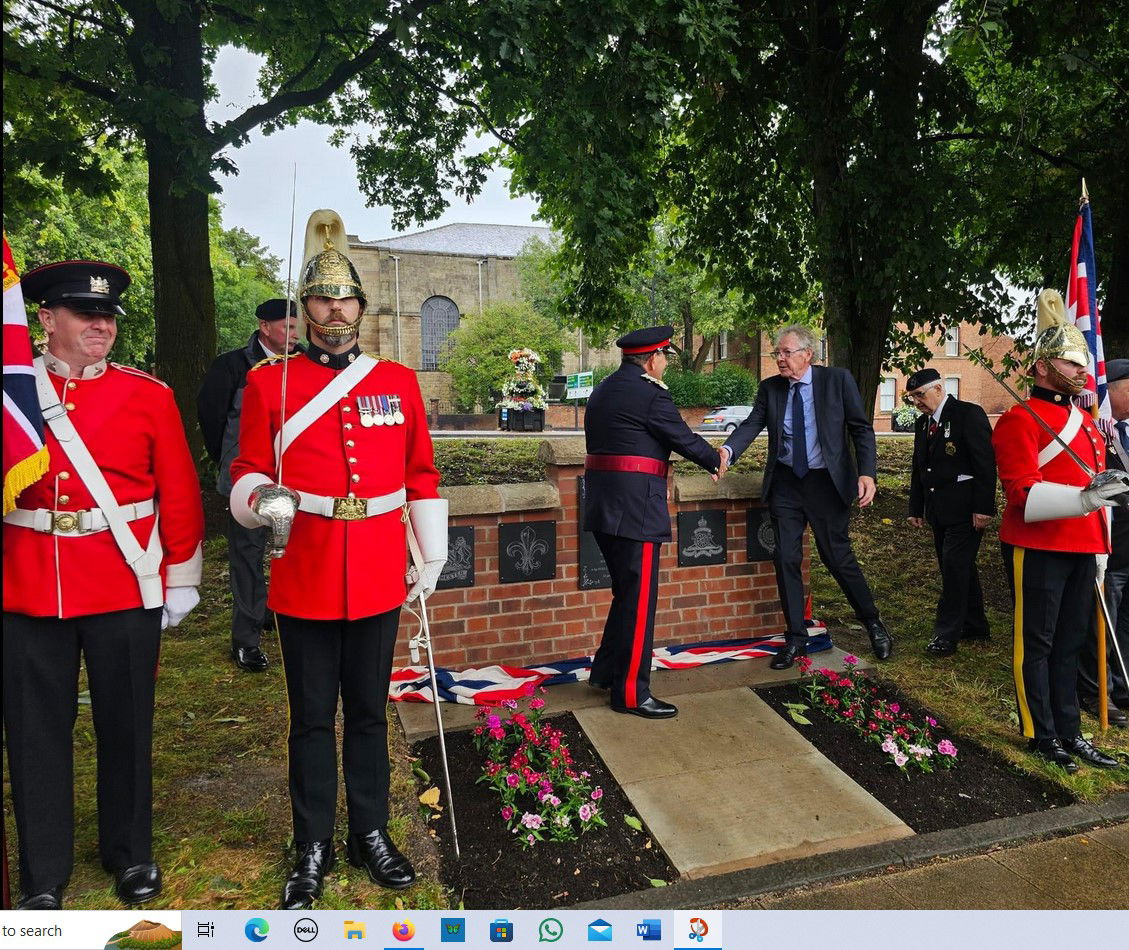
The High Sheriff of Greater Manchester Dr. Eamonn O'Neal and Mr. Hugh Darlington unveiling the memorial
Rev Roland Harvey of Wigan Parish church held a short service and said prayers before the memorial was jointly unveiled by the High Sheriff of Greater Manchester, Dr. Eamonn O'Neal DL and Mr. Hugh Darlington. The grandson of Sir Henry Clayton Darlington, the Commanding Officer of the 1st/5th Battalion Manchester Regiment during the Great War of 1914-1918.
Graham Taylor
2024
Photos courtesy of Wigan World and Deborah Pugh